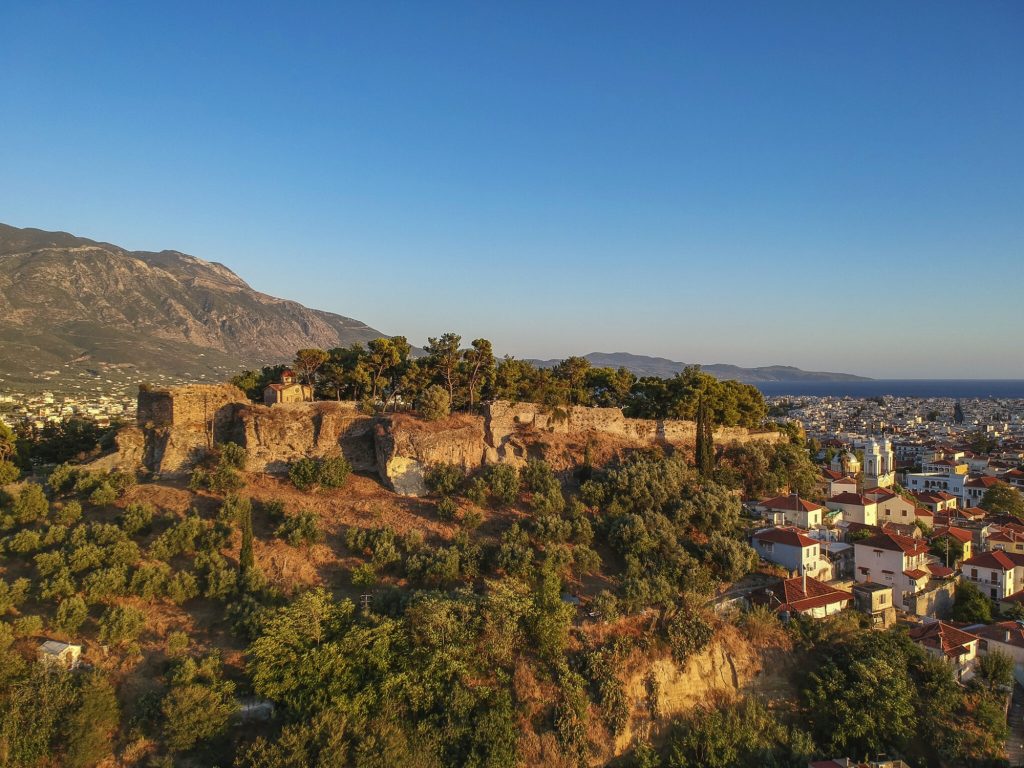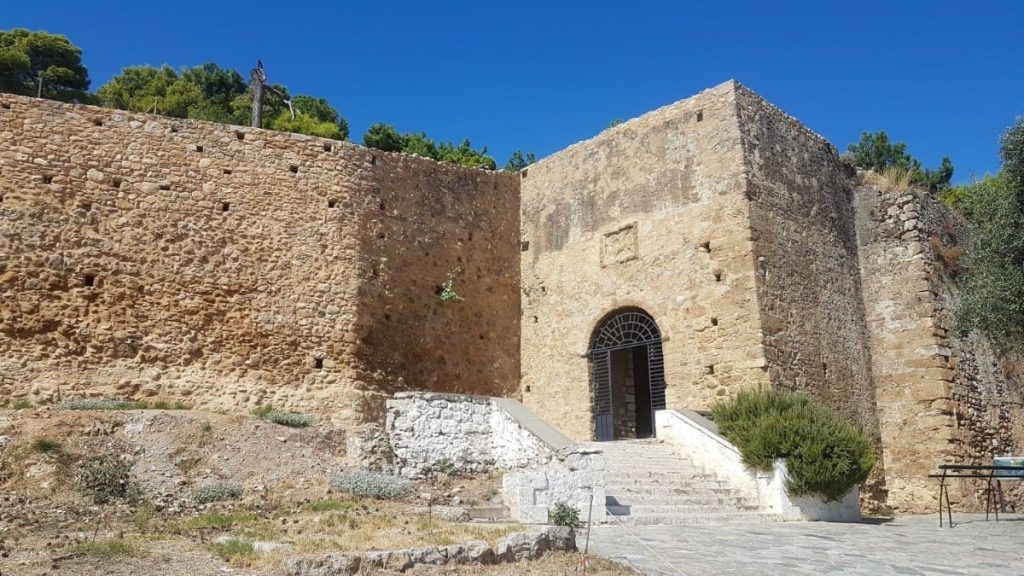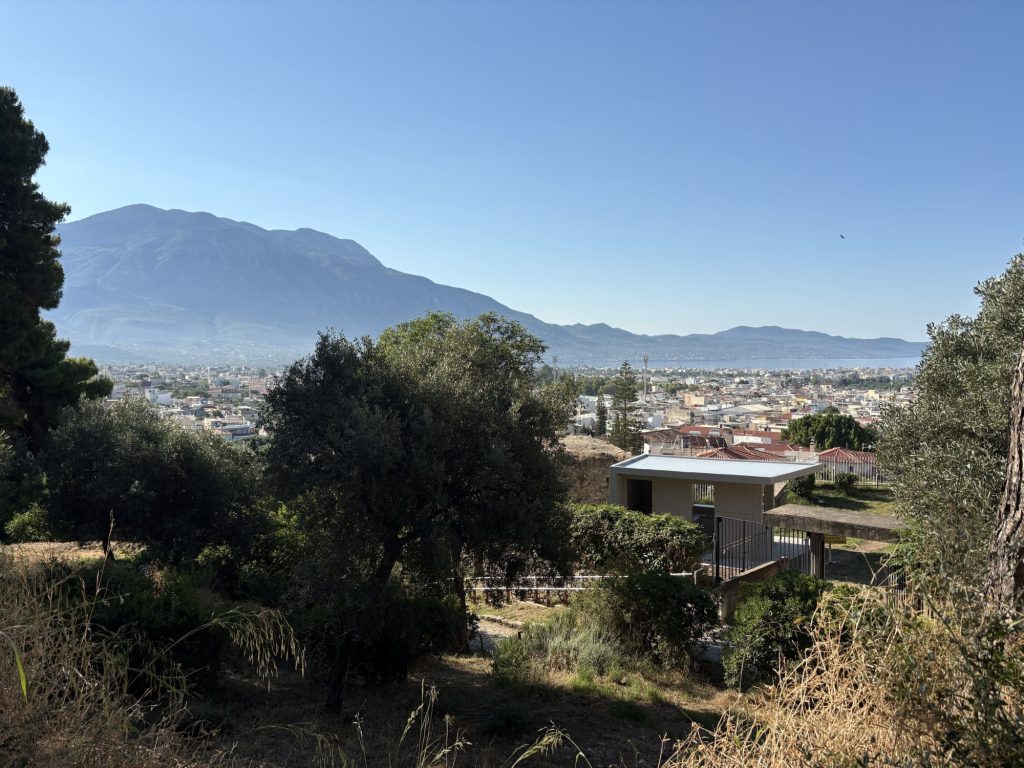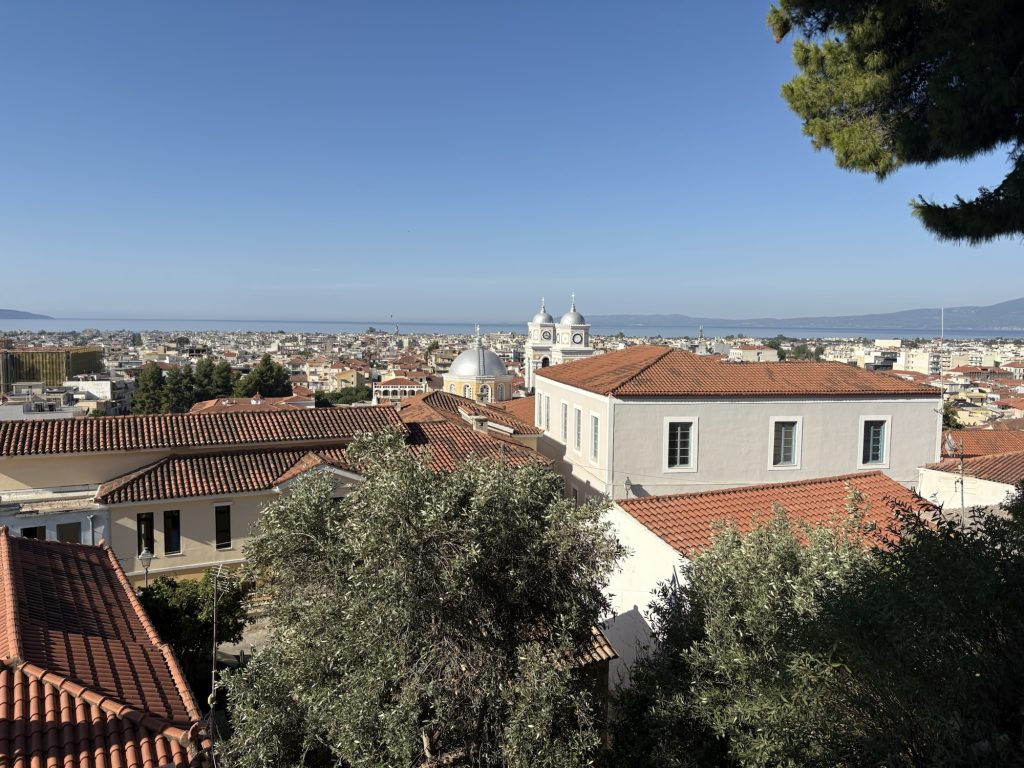
2. Lost in translation
As mentioned in the last post, Homer, the famed poet thought to have lived sometime between the 8th and 7th centuries BCE, so just under 3,000 years ago, wrote of an ancient city called Pharae, built where Kalamata’s castle stands today. I don’t know much about Greek gods, but it’s said to have been built by Pharis, the son of Hermes, an Olympian deity widely considered, among many other things, to have been the God of boundaries, roads and travellers.
If you’ve ever endured an all-day wait for a Hermes package that never turned up, lost in the system of the courier presumably named after him (since rebranded as Evri, so poor was its reputation), you hope that the God’s responsibilities were better executed than his parcel handling namesake.
With Homer’s 3,000-year-old mention appearing to be as far back as Kalamata’s recorded history goes, I thought the castle a good place to start in getting a feel for the place and decided to head on up there. It was sure to be better than yesterday morning, still as hot but minus the luggage, reinvigorated by a better night’s sleep than the previous ones 2 hours and a with a full scamxiety recovery. Buoyed up by the added certainty of a roof over my head I woke early and set off with as much of a spring in my step as the heat allowed.
Although I wouldn’t entertain the idea in certain places, like jungles, I’m quite partial to getting lost in cities, with certain exceptions. If you get proper lost there’s always Google to fall back on but wandering around, for me at least, is the best way to get your bearings and asking the people you come across when you’re not quite sure where you are can be fun. Both are surely more enjoyable than being glued to a phone, head bowed, and missing some of what’s going on around you.
I was reminded as I walked of a 1974 visit to the village of Annapolis in the White Mountains of Crete. Tourism hadn’t developed at all back then and, still a teenager, I hadn’t much either.
After a long, steep ascent from the coast, I’d crawled towards the outskirts of the village and, passing a single storey home that had probably stood there for centuries, I’d asked an elderly man who’d been observing my approach if I was heading in the right direction. More inquisitive than welcoming he’d barked “Germanos?” I couldn’t speak much Greek then but when I told him I was English his mood changed and, taking my arm, he’d ushered me into the shade beside his home and yelled something to his wife, who’d emerged moments later with a bowl of water and a sponge. She’d then gesticulated that I should remove my shoes and socks and, before I knew it, my feet were in her bowl, and she set about washing them. It was excruciatingly embarrassing and awkward, and much as I tried to impress upon them that it wasn’t necessary, both seemed affronted at my refusal. She carried on as if it was the most natural thing to do for a weary traveller.
Much of this had to do with the fact that Germany had occupied Crete during the second world war, razing several villages to the ground and committing a range of horrific atrocities. The village from where I’d come, Chora Sfakion, had been the place from which 16,000 overwhelmed British and Commonwealth troops had been evacuated, aided by the Cretan resistance. The man whose wife was washing my feet may well have been one of them, and perhaps she’d played a part too. The resistance of the local population had been substantial, for which some paid a heavy price
I didn’t expect the same treatment as I wandered through Kalamata’s old town but that’s an extreme example of the sort of unexpected, sometimes awkwardly embarrassing hospitality you can encounter getting lost in Greece and, in my experience, elsewhere too.
Although Kalamata’s a city with a population of around 70,000, because it sprawls between the sea and is circled by the Taygetos mountains, you’re never far from having a rough idea of where you are. Google reckoned on the castle being 21 minutes away but that was as the crow flies, so to speak, and I made it in a leisurely 50, getting enjoyably lost along the way.
My rooftop eyrie’s a short walk from the sea in a bustling part of town comprising homes, businesses, cafes, shops spilling fruit and vegetables out onto the pavements, churches and schools etc., while the outskirts through which my walk took me, though bustling too, gradually quietens the further out you go.
Like the old towns that spring up around citadels all over the Mediterranean, although most allow an occasional glimpse of the castle above, you can still get a bit lost in the warren of streets and alleyways that weave their way between structures built long before town planners had much of a say. In one I came across a wonderful sawmill come carpenter’s workshop. Despite the presence of a few modern tools, in amongst the timber and dust I spied some that looked positively ancient and, not really lost but interest piqued, I asked a man in a sawdust coated apron having a smoke on a step if I was going the right the way for the castle gate. He obliged and when I pointed admiringly at some of the machinery behind him, he invited me in.
He didn’t cleanse my feet, but he was evidently pleased to show me round his workshop, which had been in his family for 3 generations, an Alladin’s cave of old machinery and massive timbers of all shapes, sizes and ages. He told me that they salvage some of the planks and beams that were propped up all around from old buildings because it’s better than any you can buy today, as was much of the machinery.
When I admired a half-built chair he was working on, he told me that they avoided using nails and screws where possible and he’d used none on the chair, or on several cupboards into which his brother was rubbing wax. This is the kind of treat you miss if you’re wedded to crow flying Google routes.
Soon reaching the castle’s entrance (pictured below), a walk up a steep slope took me to a hut in which a man was nodding who, stirred by my greeting, sold me a ticket. He told me it was his first of the day and when I asked if it gets busier he answered with a simple no.
Once a Byzantine fortress the castle’s changed hands many times owing to Greece’s occupation by the Turks and Venetians. It’s seen much reconfiguration over the years, the current remains being a rebuild that followed its conquest in 1205 by the Franks, a powerful and influential group of Germanic tribes.

To be honest, although the castle offers spectacular views of Kalamata and the Messenian Gulf, it’s a bit of a mess, in part because of the 1986 earthquake, which left many parts dangerous and much of it now fenced off. The only signs of life, apart from the ticket man and me, was a distant team of archaeologists sifting soil beneath a tarpaulin beside the Chapel of the Annunciation, which looked interesting but was out of bounds. You might just be able to see them if you can make the picture below bigger.

I didn’t stay long and made my way back through the old town, stopping only once to lend a hand to an elderly woman whose carrier bag had split, spilling tomatoes all over the cobbles. Gathering them up between us, guessing that I’d been to the castle she’d asked me if I’d seen the chapel. Things got a bit tricky then because I wasn’t sure what she was saying but, with the help of Google Translate, she told me that there’d been a church on the site of the castle in the 6th century, dedicated to the Virgin Mary. It housed an icon called the Panagia I Kalomata, the Virgin of the Beautiful Eyes, and that’s how Kalamata got its name.
Parting company I thanked her profusely, as she did me, but I wasn’t convinced she was right. Chat GPT had told me that this was most probably a local folk legend and the city’s name was more likely derived from the Greek word “kalamia” (καλαμιά), meaning reeds. The area was once full of reeds, especially around the banks of the Nedon River, which runs through the city.
It had all got a bit confusing. The intertwining of natural and religious heritage, Chat GPT, the rising heat of the day and Google Translate found me walking home as the crow flies, my eyes fixed firmly on Google Maps. I like getting lost but sometimes you just need to get home.



